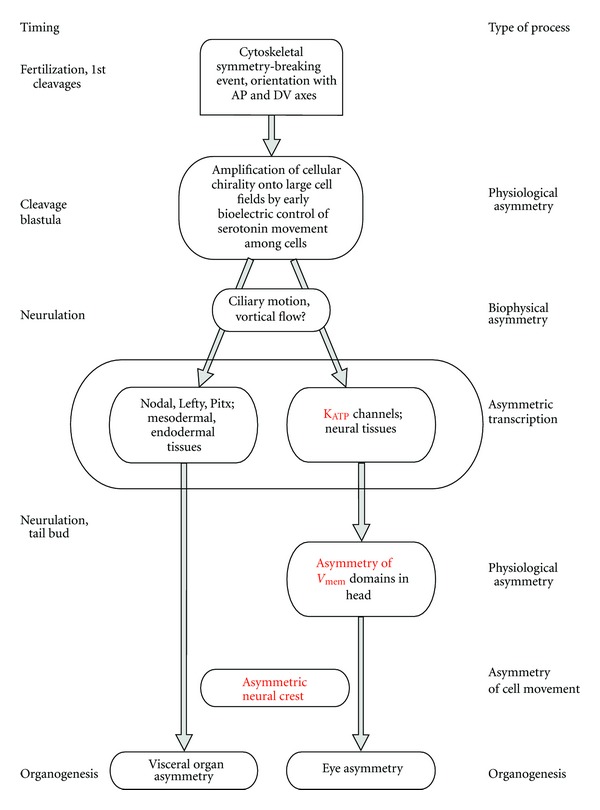Figure 5.

A model of physiological asymmetries within the overall scheme of the left-right patterning pathway. In Xenopus, bilateral symmetry is first broken, and the left-right axis is consistently oriented with respect to the dorsoventral and anterior-posterior axes, during early cleavage stages [8, 81]. The intracellular chirality is amplified onto multicellular cell fields during cleavage and blastula stages by the voltage-dependent movement of small molecule determinants through gap junctions [82–84]. The transduction of voltage gradient differences by epigenetic mechanisms [85] and other biophysical events such as ciliary movement [86] initiates at least two asymmetric transcriptional cascades. The first is the well-known Nodal, Lefty, and Pitx2 cassette that drives asymmetric organogenesis of the visceral organs. The other is the asymmetry of KATP channel subunits expressed in neural tissues, which results in asymmetric gradients of resting potential that directs development of the eye [87]. Future work will determine the functional linkage of the reported asymmetry in neural crest cell movement.
